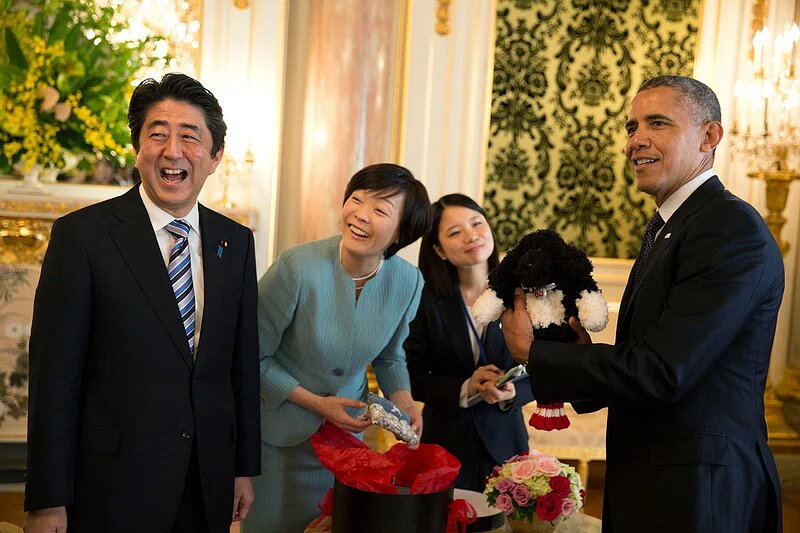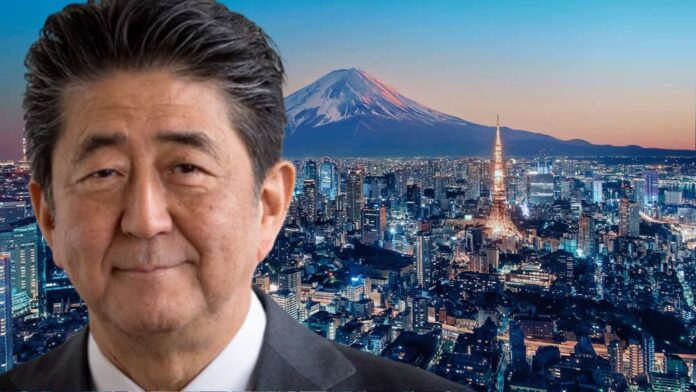In the annals of Japanese political history, one name stands out as a beacon of resilience, statesmanship, and transformative leadership – Shinzo Abe. Born on September 21, 1954, in Tokyo, Abe emerged as a key figure in shaping Japan’s destiny, leaving an indelible mark on the nation’s political landscape. From his early days in politics to his stints as Prime Minister, Abe’s journey is one of unwavering determination, economic revival, and a commitment to global diplomacy.
Page Contents
Early Life and Political Roots
Shinzo Abe hails from a distinguished political lineage; his grandfather, Nobusuke Kishi, served as Japan’s Prime Minister, and his father, Shintaro Abe, was a foreign minister. This heritage laid the groundwork for Abe’s early exposure to the intricacies of politics, shaping his worldview and igniting a passion for public service.
Educational Pursuits
Abe’s academic journey is a testament to his dedication and intellectual prowess. He graduated from Seikei University in 1977 with a degree in political science, setting the stage for his future political endeavors. His keen interest in international relations led him to the University of Southern California, where he studied public policy and earned a Master’s degree in 1981.
Read Also : Nelson Mandela: A Legacy of Courage, Compassion, and Change
Early Political Career
Shinzo Abe’s political career commenced in the late 1970s when he joined the Ministry of Foreign Affairs. His early years in the diplomatic service honed his understanding of global affairs and provided a solid foundation for his later roles. In 1993, he successfully transitioned into electoral politics, securing a seat in the House of Representatives – the lower house of Japan’s National Diet.
Abe’s initial foray into politics showcased his commitment to conservative values and economic reform. His rise within the Liberal Democratic Party (LDP), the political powerhouse in Japan, was swift, reflecting his acumen and dedication to his principles.
First Premiership and Early Challenges
In 2006, Shinzo Abe ascended to the highest political office in Japan, becoming the country’s youngest Prime Minister since World War II. However, his initial term was marred by a series of challenges, including a scandal involving pension records and political missteps. Faced with adversity, Abe exhibited resilience and made the courageous decision to step down in 2007, a move that would later define his political character.
The “Abe Resurrection”
A lesser individual might have faded into the shadows after such a setback, but not Shinzo Abe. The following years saw him meticulously rebuilding his political capital within the LDP, solidifying support, and honing his policy agenda. In 2012, he made a triumphant return to the Prime Minister’s office, marking the beginning of an era that would reshape Japan and elevate it onto the global stage.

“Economic Abenomics” and Structural Reforms
One of the cornerstones of Abe’s second premiership was his ambitious economic policy known as “Abenomics.” This three-pronged approach aimed to combat deflation, stimulate economic growth, and revitalize Japan’s stagnant economy. With a mix of monetary easing, fiscal stimulus, and structural reforms, Abe sought to break the shackles of economic stagnation that had gripped Japan for decades.
The economic revival under Abenomics saw improvements in GDP growth, increased foreign direct investment, and a boost in consumer confidence. Abe’s commitment to structural reforms, such as labor market liberalization and corporate governance enhancements, earned him accolades both domestically and internationally.
Constitutional Reforms and National Security
Abe’s tenure was not limited to economic matters; he also tackled long-standing issues of national security and constitutional reforms. He aimed to reinterpret Japan’s pacifist constitution, allowing for a more robust role for the Japanese Self-Defense Forces in international peacekeeping efforts. These moves sparked both support and opposition, sparking a national debate on Japan’s role in global security.
Diplomacy and Foreign Relations
Shinzo Abe’s diplomatic finesse played a pivotal role in shaping Japan’s international standing. Amidst regional tensions, he actively sought to strengthen alliances, especially with the United States. His close relationship with then-President Barack Obama was instrumental in navigating complex geopolitical challenges, such as the North Korean nuclear threat and territorial disputes in the East China Sea.
Abe’s commitment to a free and open Indo-Pacific region was evident in his efforts to deepen ties with India and Australia. His vision extended beyond economic cooperation, encompassing shared democratic values and a collective commitment to regional stability.
Read also : Benjamin Netanyahu: The Resilient Leader of Israel
Legacy and Departure
In September 2020, Shinzo Abe announced his resignation due to health reasons, ending his second term as Japan’s Prime Minister. His departure marked the conclusion of an era characterized by economic rejuvenation, diplomatic prowess, and the unwavering pursuit of a redefined Japanese identity on the world stage.
As Japan bid farewell to its charismatic leader, the legacy of Shinzo Abe endured. His resilience in the face of challenges, commitment to economic revitalization, and dedication to strengthening global partnerships left an indelible mark on Japan’s political landscape.
Conclusion
Shinzo Abe’s biography is a compelling narrative of a political phoenix who rose from the ashes of early setbacks to guide Japan through a period of profound transformation. His legacy extends beyond the economic reforms and diplomatic achievements, encapsulating the spirit of resilience and determination that defines great leadership. Shinzo Abe’s imprint on Japan’s political history is a testament to the enduring impact of visionary leadership on a nation’s destiny, leaving an inspiring tale for generations to come.


